Algorithms for Linked Lists: Creation, Traversal, and Item Management
VerifiedAdded on 2019/09/30
|8
|921
|228
Practical Assignment
AI Summary
This assignment presents a comprehensive exploration of linked list algorithms, encompassing ten distinct procedures designed to manipulate and manage linked list data structures. The algorithms cover fundamental operations such as creating a linked list with two items, calculating the number of items, displaying data items, merging two linked lists, inserting items at the beginning, searching for specific items, deleting items, deleting an item at a specific position, deleting all instances of a given item, and inverting the linked list. The solutions, including those provided by Samuel Wiser and Patrick McGill, demonstrate diverse approaches to achieve the desired functionalities. These algorithms utilize data structures like DATA and LINK arrays, along with GETNODE and RET abstractions for node management. The assignment provides valuable insights into linked list implementations and their practical applications in data management and algorithm design.
1 out of 8
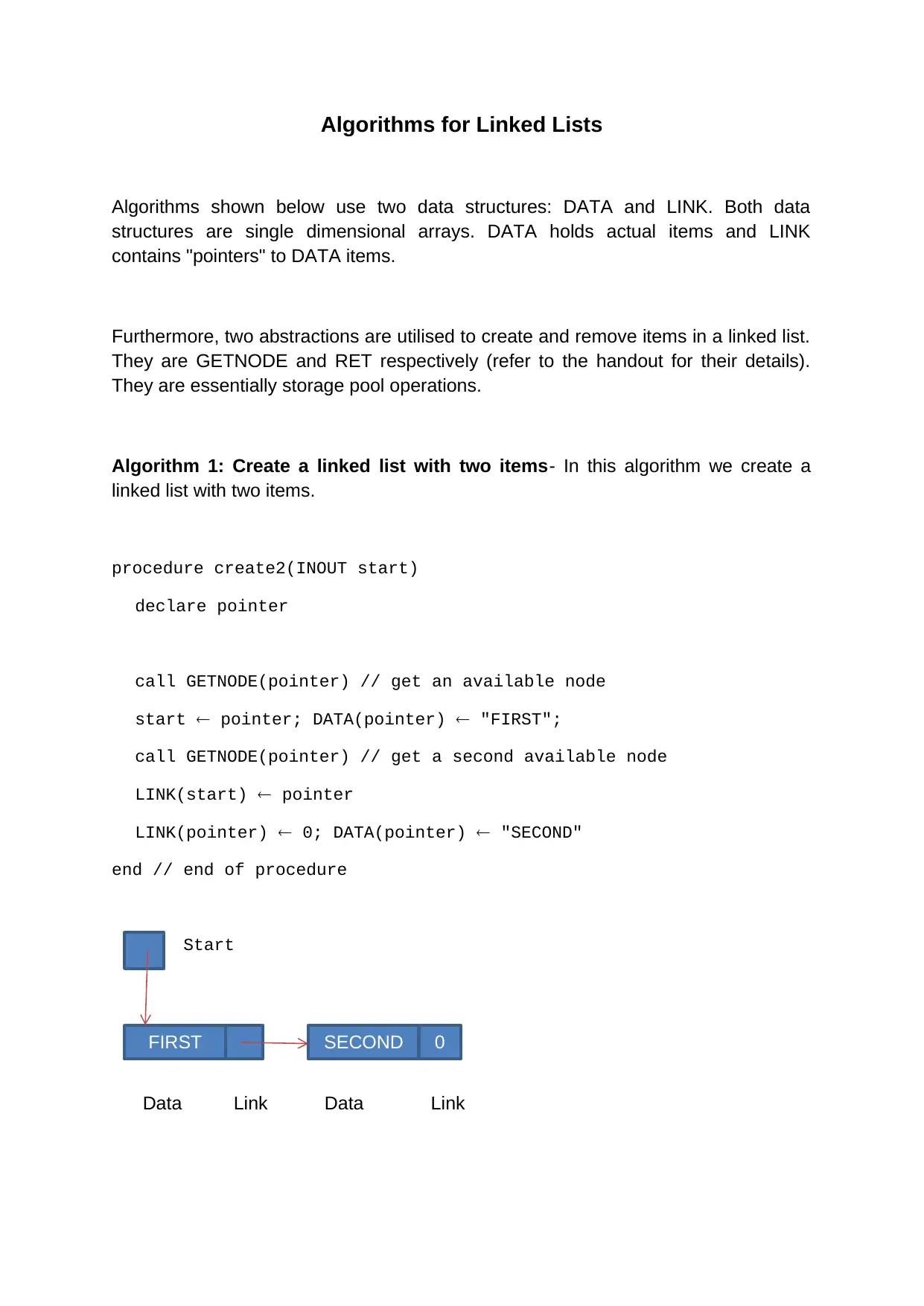
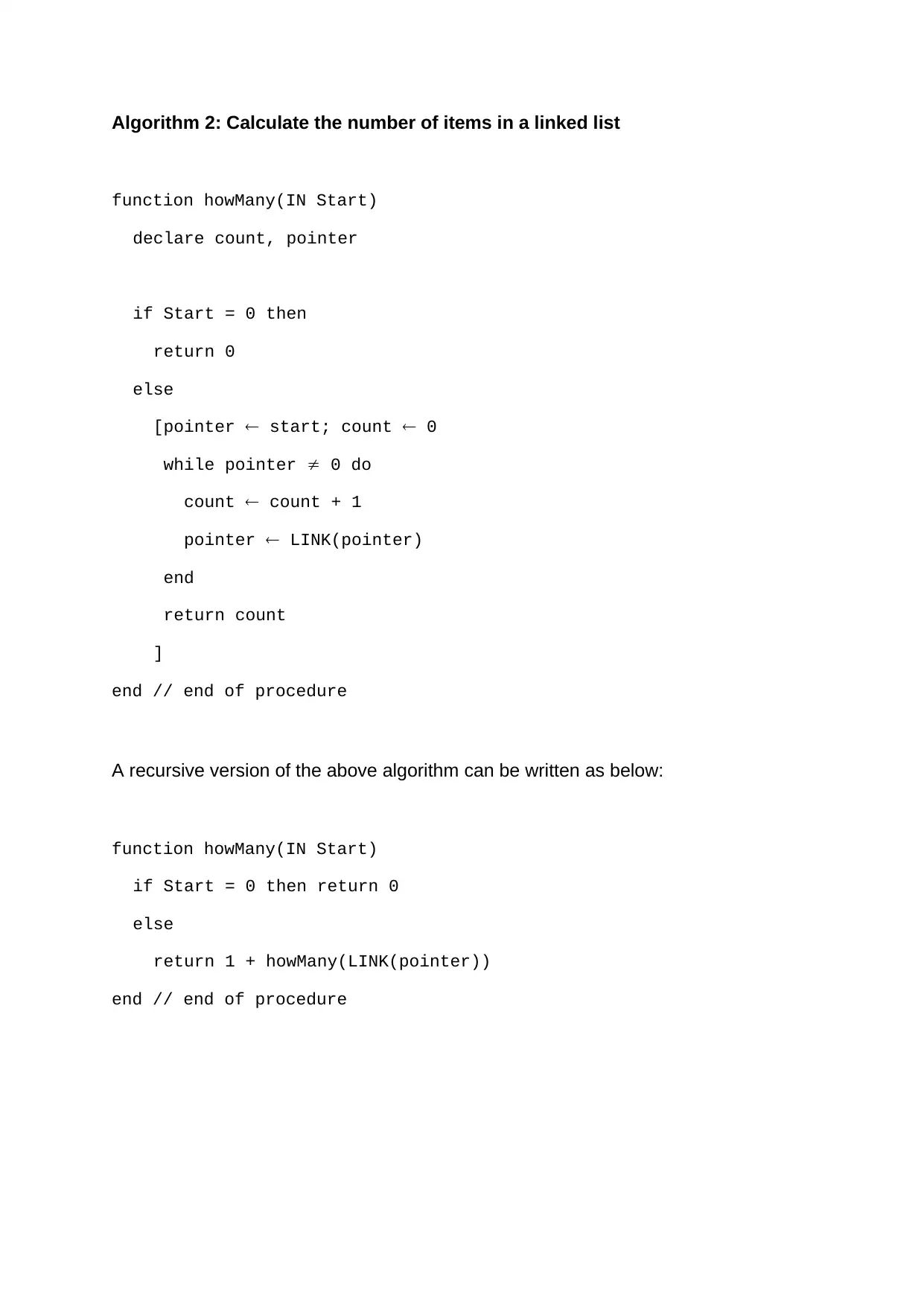
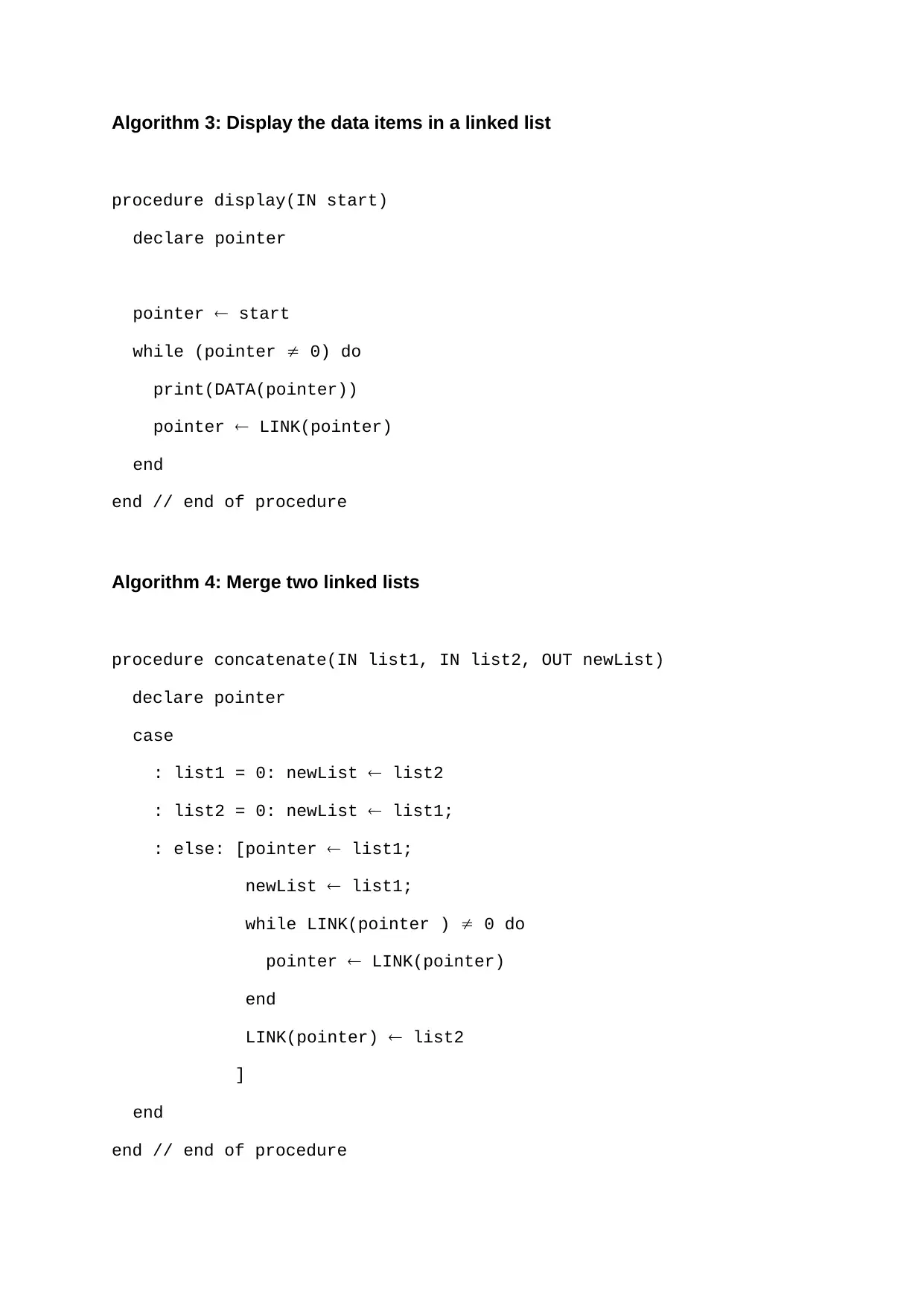

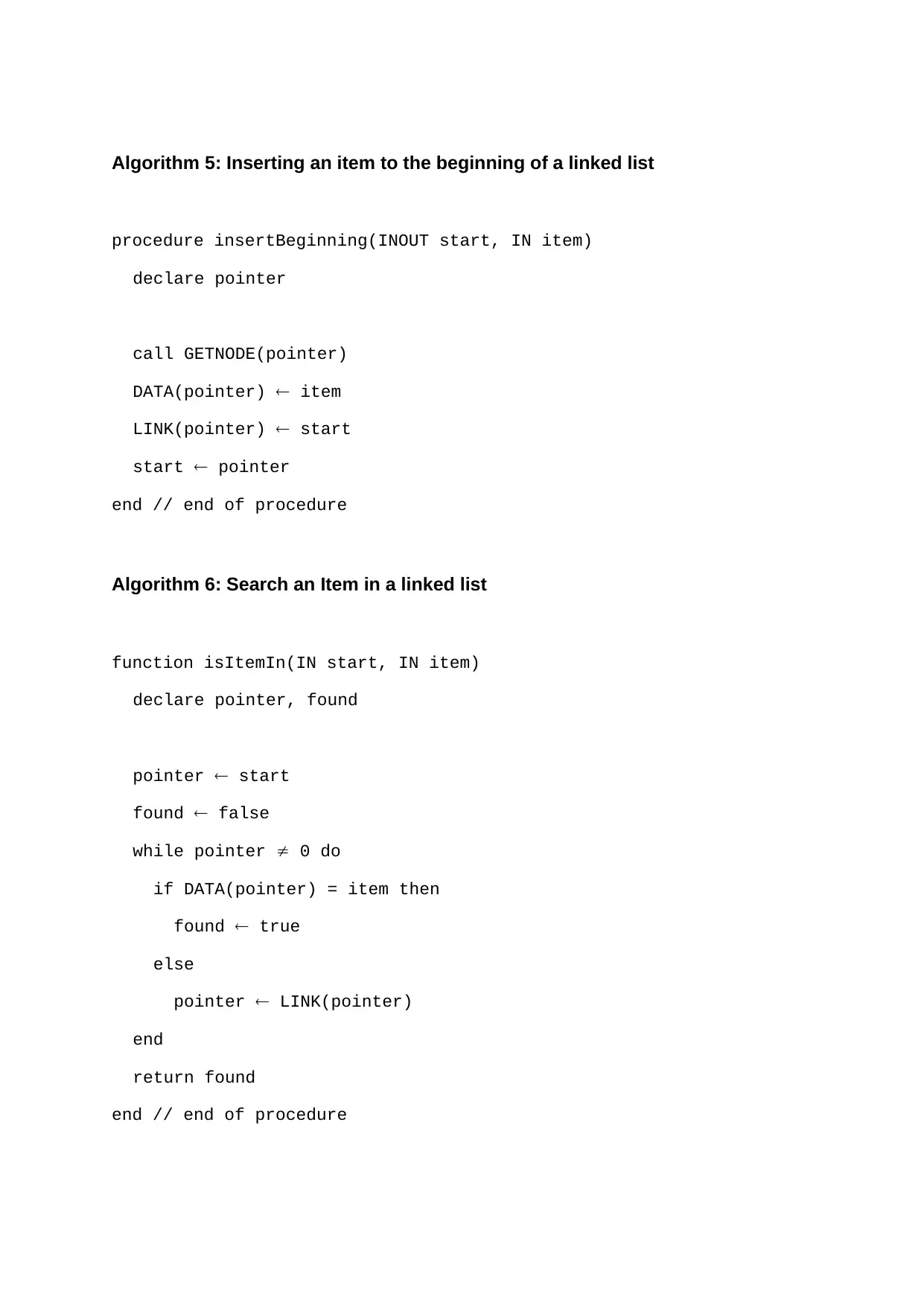
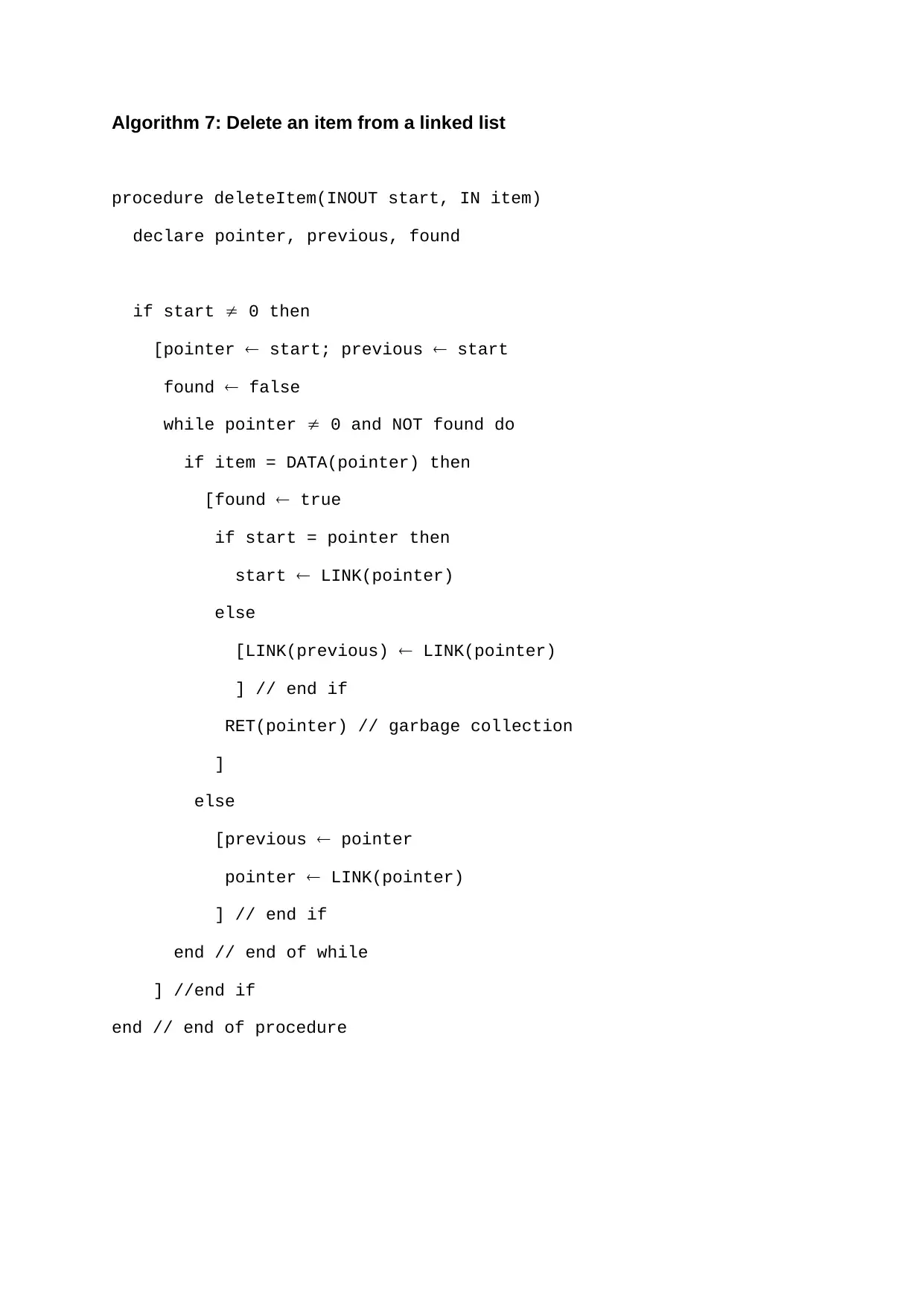
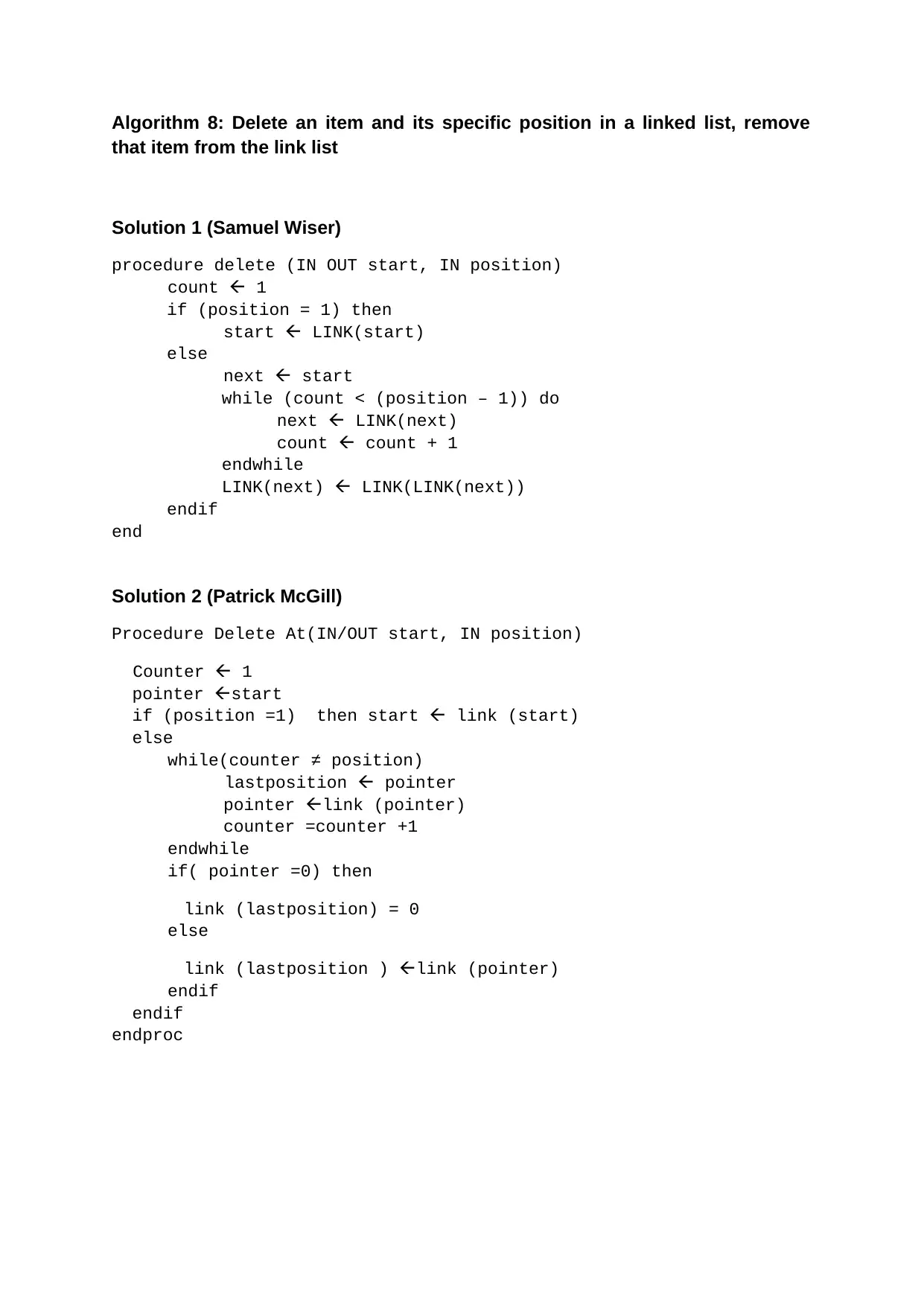
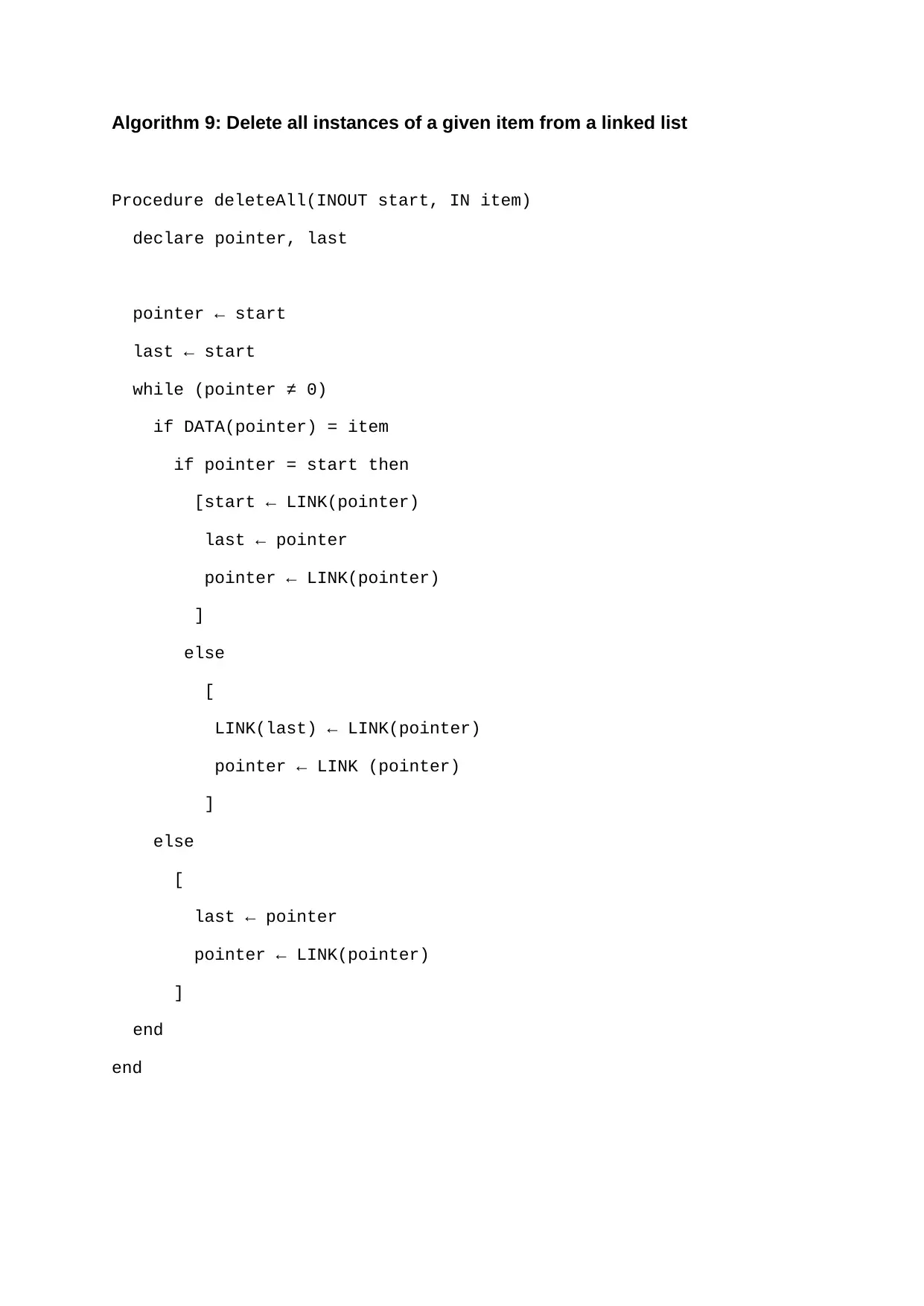
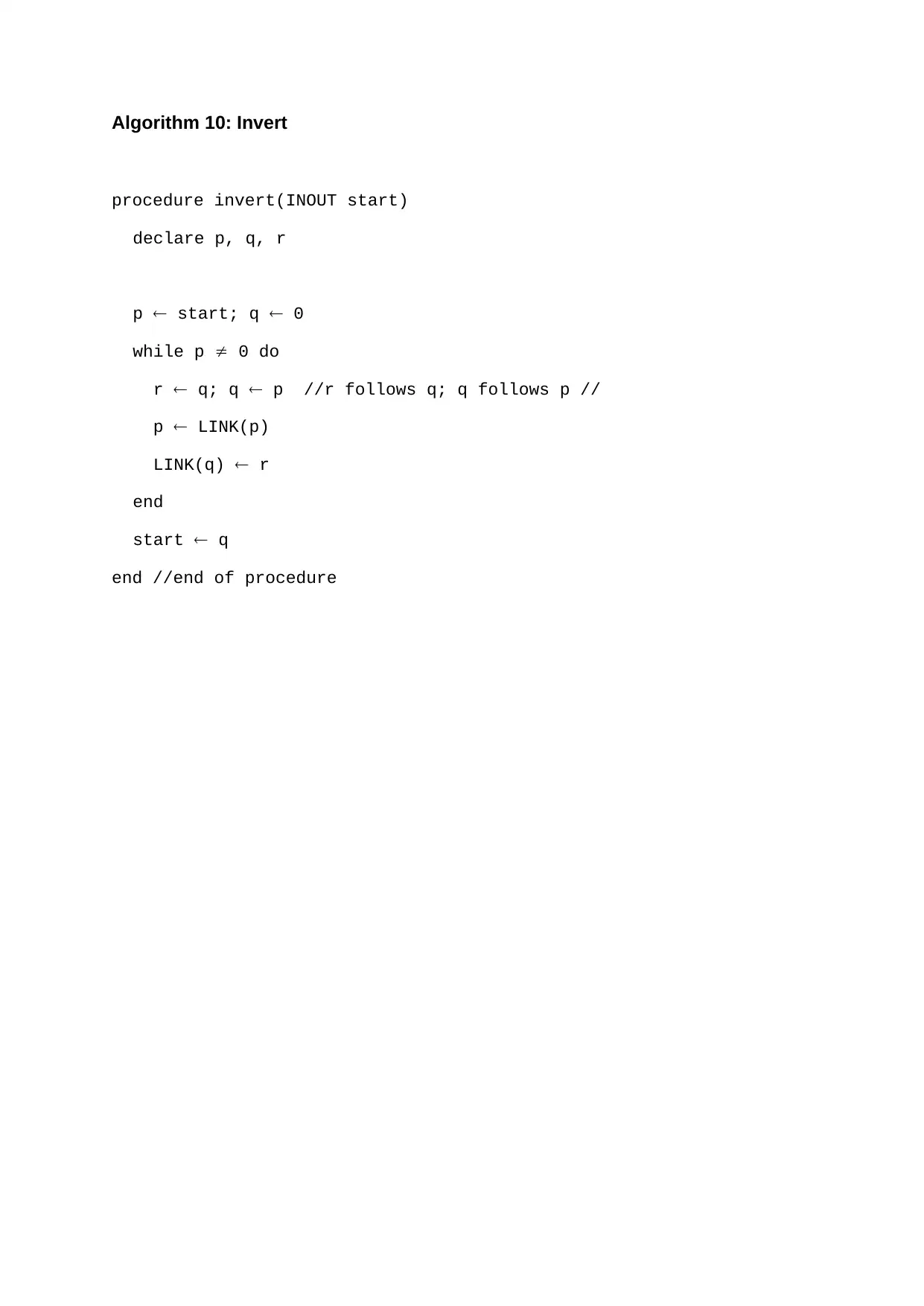






![[object Object]](/_next/static/media/star-bottom.7253800d.svg)